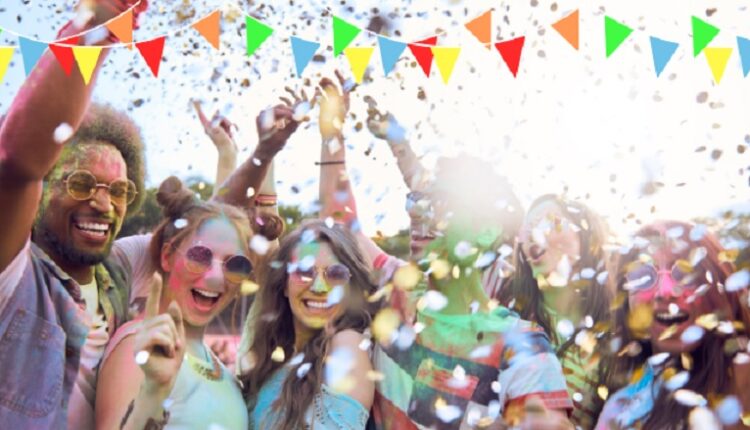Events, at their core, are moments elevated—occasions where ordinary time is suspended, and people come together for a purpose, a celebration, or a cause. Whether intimate or grand, corporate or cultural, each event we attend or host has the potential to create memories, forge relationships, and spark transformation. From ancient ceremonies to modern-day galas, events have long served as a cornerstone of human connection, storytelling, and identity. Their success, however, lies not just in flawless execution, but in the emotion and intention behind them.
The Power of Purpose-Driven Gatherings
An event without purpose is merely a gathering. What distinguishes a meaningful event from a forgettable one is the clarity of its intention. Is it to celebrate an achievement? Inspire a cause? Strengthen a network? Launch a vision? The “why” informs the “how”—from the tone of the invitations to the layout of the space, and from the program schedule to the very last word spoken.
Purpose-driven events do more than fill a room; they fill hearts. A wedding, for instance, is not just a party—it is the ceremonial merging of two lives. A conference, when thoughtfully curated, becomes a hub of ideas and innovation. Even a product launch, if strategically crafted, transforms into a story, an experience, a promise.
The Evolution of Event Culture
Over centuries, the nature of events has evolved dramatically, shaped by culture, technology, and global trends. In ancient Greece, public festivals honoring the gods doubled as vital civic events. During the Renaissance, masquerade balls and royal banquets were not merely indulgences—they were political statements and demonstrations of power.
In the 21st century, event culture is more dynamic and democratized than ever. Virtual conferences, hybrid weddings, pop-up activations, and immersive art installations all reflect a broader shift: attendees now seek not just attendance, but engagement. Experiences, rather than extravagance, have become the new measure of success.
Social media has also transformed how events are perceived. The rise of the “Instagrammable moment” has added a visual and viral dimension to event planning. Décor, lighting, branding, and even food presentation are now designed to be photographed, shared, and remembered.
The Art and Science of Event Planning
Behind every seamless event lies a symphony of strategy, logistics, and creativity. Event planning is both an art and a science—requiring precision, adaptability, and a flair for storytelling.
Key components of successful event planning include:
-
Conceptualization: Defining the event’s vision, theme, and target audience
-
Budgeting: Allocating resources wisely while balancing ambition and practicality
-
Venue Selection: Choosing a space that complements the event’s tone and flow
-
Program Design: Structuring the timeline to maintain energy and engagement
-
Vendor Coordination: Managing caterers, decorators, AV teams, and more
-
Crisis Management: Preparing for unexpected scenarios with calm efficiency
Yet beyond logistics, the best planners understand human emotion. They know how to orchestrate anticipation, craft comfort, and build moments of awe. The scent of fresh flowers, the echo of live music, the warmth of lighting—every detail contributes to a guest’s emotional journey.
Events as Cultural and Corporate Catalysts
Events are more than social outings—they are cultural and corporate instruments of influence. Festivals like Diwali, Mardi Gras, or Chinese New Year reinforce collective identity and tradition. Political rallies energize movements. Art fairs and literary festivals celebrate creativity and provoke thought.
In the corporate world, events are equally pivotal. Annual meetings, leadership retreats, client appreciation dinners, and industry expos all serve as strategic platforms. They boost morale, reinforce brand values, and foster loyalty. When well-executed, corporate events become milestones that communicate vision, unity, and ambition.
Many companies now integrate sustainability and inclusivity into their event strategies, understanding that today’s audiences value responsibility as much as sophistication. From zero-waste initiatives to diverse speaker panels, the industry is gradually evolving to reflect the world’s growing consciousness.
The Emotional Architecture of an Unforgettable Event
What makes an event linger in memory long after the last toast or farewell? It is the emotional architecture—the subtle, invisible scaffolding that shapes how people feel.
Unforgettable events often feature:
-
Surprise and Delight: Unexpected moments that provoke joy or wonder, like a surprise guest, a personalized gift, or an impromptu performance
-
Connection: Opportunities for authentic interaction, whether through shared activities, meaningful conversations, or interactive elements
-
Narrative Flow: A coherent beginning, middle, and end that mirrors a story arc, guiding guests through an emotional journey
-
Sensory Engagement: Thoughtful use of color, sound, texture, and taste to evoke mood and memory
-
Authenticity: A genuine reflection of the host’s values, passions, or mission, which resonates more than spectacle alone
When emotion is prioritized over entertainment, attendees leave not just impressed—but moved.
The Future of Events: Where We’re Headed
Looking ahead, the events industry is poised for continued reinvention. Technology will play a central role: AI-driven personalization, augmented reality experiences, and blockchain-based ticketing are already reshaping the landscape.
Simultaneously, there’s a growing appetite for intimacy and meaning. Micro-events, wellness retreats, purpose-led conferences, and community-driven festivals are gaining traction. In this new era, impact matters more than scale.
We are also witnessing a shift toward co-creation. Attendees are no longer passive recipients but active participants. Interactive workshops, open forums, collaborative art, and gamified elements invite them to become part of the experience, not merely observers.
Final Reflections: More Than Just a Moment
Events are the punctuation marks of our lives—the exclamation points of celebration, the ellipses of transition, the full stops of closure. They bring people together in ways that matter, that linger, that inspire. Whether you are designing an elegant soirée, a global summit, or a small community gathering, remember this: the true success of an event lies not in the spectacle, but in the feeling it leaves behind.
In a world increasingly dominated by screens and solitude, well-crafted events remind us of our need for presence, connection, and shared humanity. And in those moments—those fleeting, beautiful, deliberate moments—we find ourselves not just attending an event, but living something meaningful.


Comments are closed.